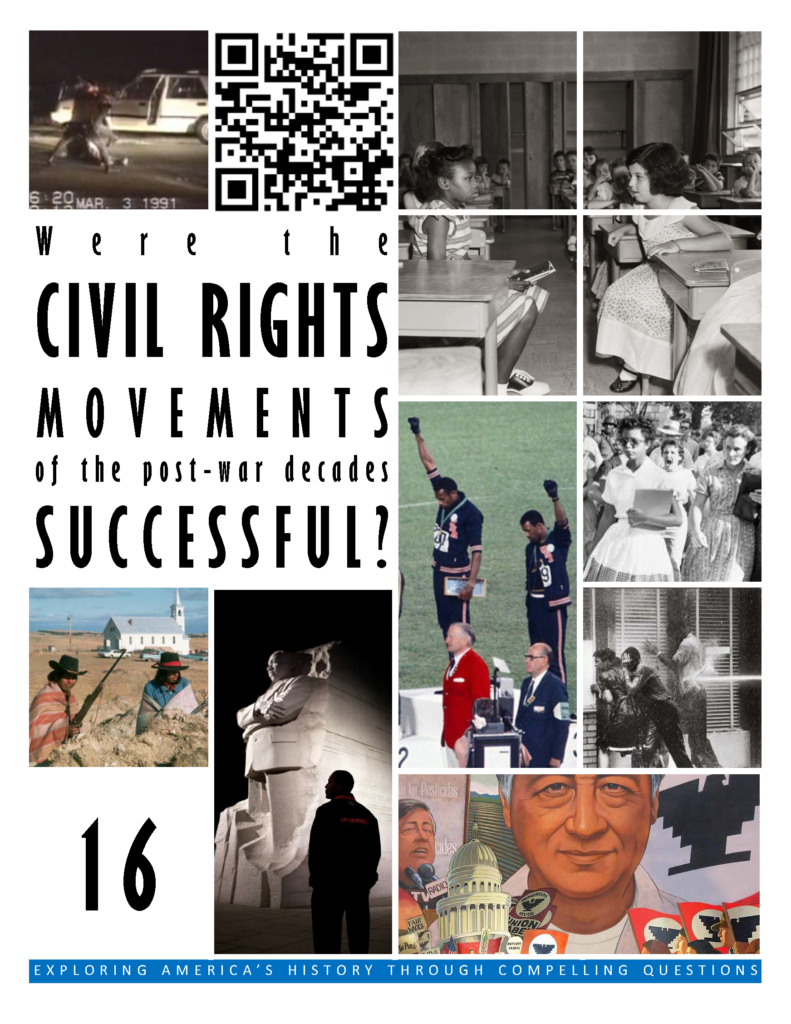
PRINT VERSION
After fighting Double V campaigns in both world war, African American troops returned home in the 1940s to an America that featured the same racial prejudices that it had for generations. However, in the 1950s, those old ways were challenged, first in court, and then on the streets in an era we remember as the Civil Rights Movement.
Led by famous and celebrated individuals such as Martin Luther King, Jr. and Malcolm X, the Civil Rights Movement of the 1950s and 1960s was one of dramatic change. The Jim Crow segregation laws of the South were undone by brave champions of nonviolence. Sit-ins, freedom rides, marches, and speeches featured in what is widely remembered as one of the greatest expressions of the American spirit of freedom.
Inspired by the African Americans of the South, Hispanic farm workers, Native Americans, disabled Americans and homosexuals all initiated their own movements to gain rights and respect.
Sometimes these movements were peaceful and inspiring. At other times, they turned violent and revealed the dark side of our humanity. In some cases they produced important pieces of legislation, while in others they showed just how divided we continue to be.
Did these movements after World War II achieve their goals? Did they advance the cause of freedom? Did they make America a better place?
What do you think? Were the civil rights movements of the post-war decades successful?
CONTINUE READING